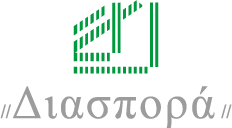Biography
Lucas Samaras was born in 1936 in Kastoria, in northern Greece. The town was near the Yugoslav and Albanian frontiers, the scene of intense fighting during World War II and the civil war that followed. Artillery fire damaged the Samaras house; his grandmother was killed and his aunt was injured. His father was a furrier and since there were no toys, young Lucas played with empty food boxes, buttons, needles and pins, cheap brooches, and other trimmings from his father's trade, making believe that “these buttons and cheap jewels were people.” Later, he and his friends played with bullets they found everywhere, which exploded when thrown in the fire, and they also played in the ossuary of the churchyard where the bones of the dead were stored. When business fell off during the Depression, his father went to the United States in 1939, leaving his family in Greece and returning after the war, when Samaras was ten. Samaras has written of the effect his father's absence had on him: “I think I am still waiting for him to come in the form of a letter, a package, a party, an explosion, an icon, a natural event. When I make art I am making a father.” In 1948 the family settled in New Jersey, and for three summers, Samaras worked for his father. “Everything that I did shows up [in my art]. If I tell you that I have this hatred for fur…then I go into pins. It's like fur, but it's much more brittle … the fur's a soft, smelly, sweaty, pliable thing. And then I end up using pins: a hard, brilliant, sharp substance.“
Encouraged by his high-school art teacher, Fabian Zaccone, Samaras attended Rutgers University on scholarship, taking art classes with Allan Kaprow, George Segal, and Robert Whitman. In 1959, after graduation, Samaras attended Meyer Schapiro's art history classes at Columbia University and he has said that Zaccone, Kaprow, Segal, and Schapiro were the teachers who influenced him most. That same year, Samaras held his first solo exhibition at the Reuben Gallery in New York.
In 1960, he began to make his first boxes, incorporating feathers, mirrors, plaster, and tacks; after that, he used scissors, knives, forks with twisted tines, razor blades, toilet paper, pins, stuffed birds, yarn, glass, plastic flowers, and clothes hangers. Samaras was soon also making books, chairs, photographs, sewn fabrics, inedible “meals,” tableware, paintings, drawings, plaques, and floor pieces.
Simultaneously seductive and repellent, Samaras's work deliberately challenges taboos, often using his own body as subject matter. It is frequently ironic, and even when most fanciful and attractive, it avoids sentimentality Through his extraordinarily revealing, startling, and disconcerting candor, Samaras has opened doors for other artists to explore the most intimate aspects of their lives.
“I have wanted to defend my mother and my father, you see. They have what É think we would call bad taste, so that l feel that some of my work is a way of giving them some dignity through me.“
Lucas Samaras’ biography is sourced from the catalogue of the exhibition Modern odysseys: Greek American artists of the 20th century (Selz, Peter, and William R. Valerio. 1999. Queens, N.Y.: Queens Museum of Art.)



